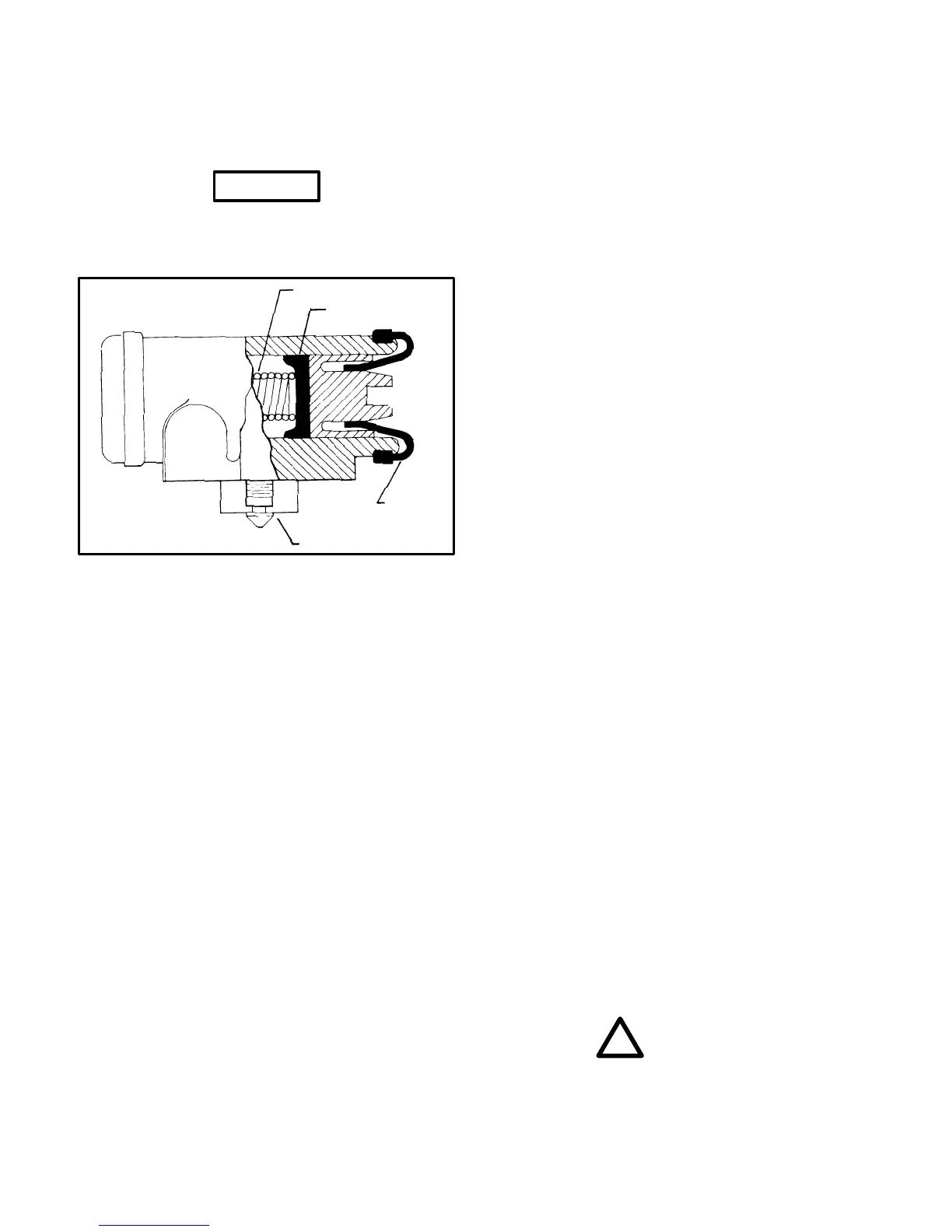172
rust or score and hone if necessary. Dip cups and pistons
in brake fluid and reassemble parts into the cylinder.
Install the wheel cylinder on the vehicle and connect the
brake line. Bleed the entire brake system. Check for
leaks prior to returning vehicle to service.
NOTICE
• Severe pitting, scoring and/or rust requires replace-
ment of unusable wheel cylinders with new cylin-
ders.
SPRING
CUP
PISTON
BOOT
BLEEDER
FIGURE 14
BLEEDING THE BRAKES
• Start the bleeding procedure with the wheel cylinder
located the farthest distance from the master cylin-
der.
Fill the master cylinder with brake fluid (replace master
cylinder cap to avoid splashing of fluid).
Attach small clear tube to the bleeding nipple. This nipple
is on the back side of the wheel cylinder and protrudes
through a hole in the top of the brake dust shield (do not
mistake it for a lubrication fitting). The nipple is threaded
and must be turned to the left slightly to allow air trapped
in the brake line to escape. Place the free end of the
bleeder tube in a container, making sure there is enough
brake fluid in the container to seal the end of the tube.
Pump brake pedal slowly until fluid coming from the
bleeder fitting is clear and free of air bubbles. (By using
clear tubing you can see when only brake fluid is passing
through the tubing and when the fluid clears). When all
the air is out of brake line, tighten the bleeding nipple
while holding the brake pedal in the down position.
Repeat the above operation for each brake line. After a
brake line is bled, refill the master cylinder, making sure
it is full before starting the bleeding operation of each
brake line.
When all brake lines are full of fluid, and are completely
free of any air, the next step is to adjust the brake shoes
for proper clearance.
TROUBLESHOOTING
BRAKE SYSTEM
Brakes Drag
1. Improper brake shoe adjustment.
2. Improper adjustment of master cylinder.
3. Improper axle end play.
4. Corrosion between parking brake, cable and
cable housing.
5. Broken brake lever spring.
6. Loose wheel bearings.
7. Wheel cylinders stuck.
Brakes Grab
1. Leaking wheel cylinder.
2. Brake drum scored.
3. Grease or oil on lining.
4. Air in lines.
5. Wheel cylinder stuck.
6. Lining loose on shoe.
Spongy Brake Pedal
1. Air in hydraulic line.
Excessive Pedal Travel
1. Brake shoe adjustment needed.
2. Fluid low in master cylinder.
3. Faulty or misadjusted master cylinder.
WARNING
!
• If brake pedal travels closer than one inch (25
mm) to vehicle floorboard, the brakes must be
adjusted or repaired. Failure to adjust or repair
as needed may cause loss of brakes.
